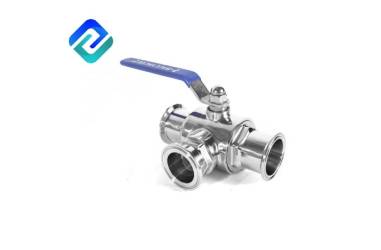- +86 187 3271 1873/+86 132 8322 1383
- [email protected]
There are many different types of plumbing valves with multiple applications. Today, we will make a clear comparison of the crystals between the two most commonly used valves (spherical and spherical). In the comparison, the Ball Valve Supplier discussed with us the main differences in structure and application:

Ball Valve
Regarding ball valve parts and ball valve types, we have two different articles in which we fully discussed pipeline valves. But here, we give you a brief introduction to the working principle of the ball valve to show you these differences. So let's look at the operation of the ball valve.
The Ball Valve is beaded. But the difference is that the size of the center hole is the same as the size of the pipe. It has a perforated and pivoted ball inside its structure to control the flow. When the hole in the ball is aligned with the streamline, it is open and the handle of the valve is flush with the streamline and is actually flowing. When the ball rotates 90 degrees, the valve closes. When the valve is closed, the handle is perpendicular to the pipeline and the direction of internal flow.
We have introduced the globe valve parts and globe valve types in two separate articles. In order to better understand the difference between the globe valve and the ball valve, we try to introduce the working principle of the globe valve in detail. The stop valve is called the control valve in the pipeline system. They are named for their spherical shape. The stop valve has an opening with a valve seat, and a movable valve disc can be screwed into the valve seat to open or close the valve.
Now that we have briefly introduced the working principle of the globe valve and the ball valve, it is time to further understand the difference between the two. Although we think that the two words "globe" and "ball" are so similar, they are quite different in terms of the structure, function and application of their respective valves. In the following sections, we will conduct a comprehensive and comprehensive study of the main differences between globe valves and ball valves.
Earlier we discussed the functions of globe valves and ball valves, and learned about the structure and components of the two types of valves. As mentioned earlier, the main difference between the globe valve and the ball valve is the way it opens and closes the flow. The stop valve is used to control and throttle the flow, while the ball valve does not control the flow, but can only close the flow. With a shut-off valve, you can adjust the flow, while a ball valve can close the flow nicely without any pressure drop.
Another difference is that the ball valve has a valve stem and a horizontally rotating ball, while the globe valve has a valve stem and a vertically moving valve plug.
If you need to keep it closed for a long time, use a ball valve. Ball valves work more efficiently in high-pressure systems such as fire hoses.
If you need to adjust the flow, it is best to use a shut-off valve. Cooling systems, fuel oil and steam systems are some applications that require shut-off valves with strict flow control. Unlike globe valves, ball valves have no installation restrictions. In addition, ball valves are lighter in weight compared to globe valves. Another difference is that the ball valve is more durable, works well after many cycles, and is more reliable even when used for a long time. The ball valve has the smallest fluid barrier and lower noise, while the globe valve has greater fluid barrier and may be a bit noisy after many years of use.
In this article, we place the two most commonly used valves, the Globe Valve and the ball valve, in the pipeline and show you how to use them to achieve the best performance. We have briefly introduced the working principles of globe valves and ball valves. Hope you know. If you still don't know which valve is best for you, please feel free to contact us.